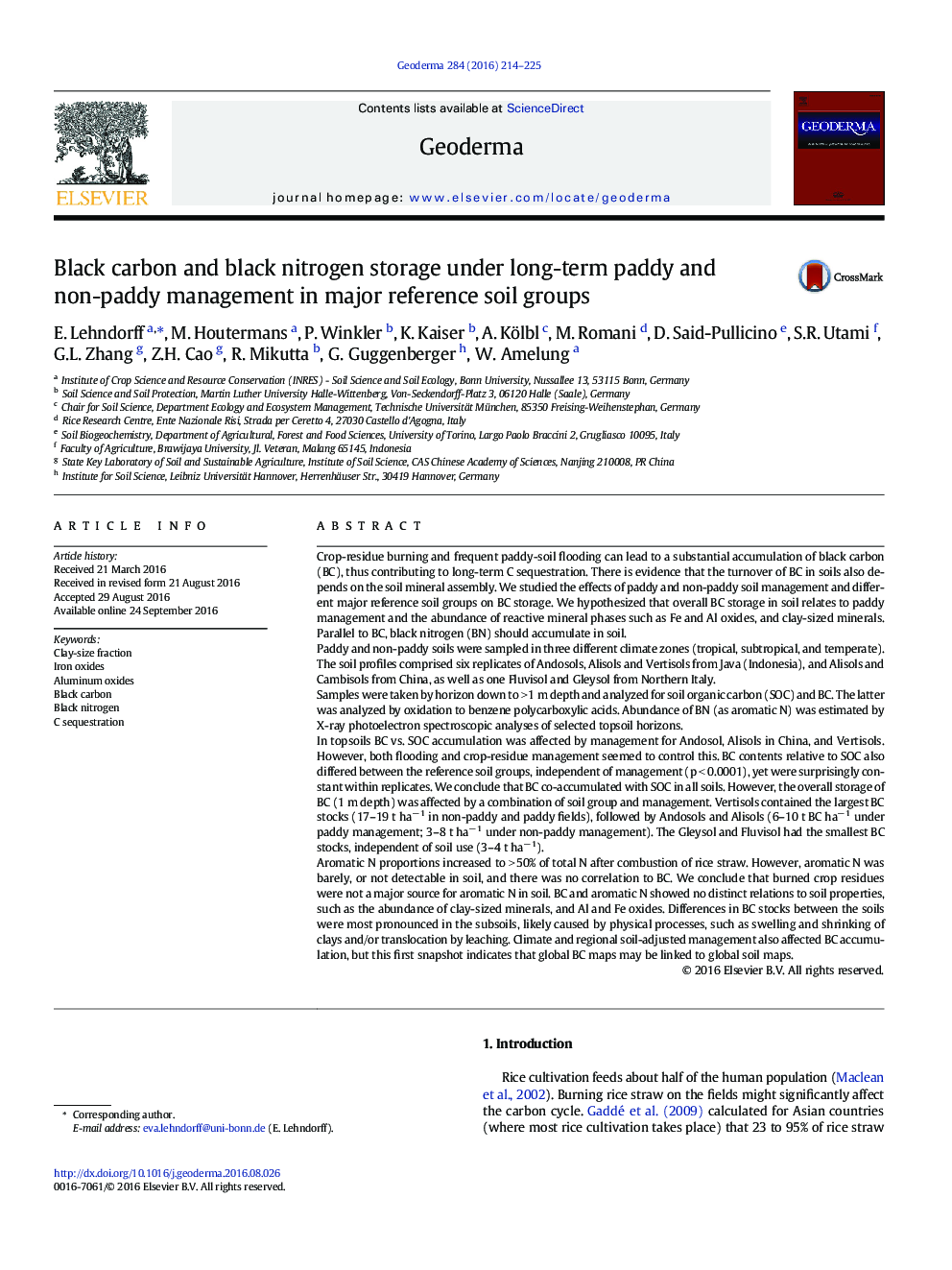| کد مقاله | کد نشریه | سال انتشار | مقاله انگلیسی | نسخه تمام متن |
|---|---|---|---|---|
| 6408299 | 1629433 | 2016 | 12 صفحه PDF | دانلود رایگان |
- Black carbon accumulation is highly variable for paddy soils.
- Black carbon stocks depend largely on substrate of soil formation.
- Black carbon did not correlate to aromatic (black) N forms in soil.
Crop-residue burning and frequent paddy-soil flooding can lead to a substantial accumulation of black carbon (BC), thus contributing to long-term C sequestration. There is evidence that the turnover of BC in soils also depends on the soil mineral assembly. We studied the effects of paddy and non-paddy soil management and different major reference soil groups on BC storage. We hypothesized that overall BC storage in soil relates to paddy management and the abundance of reactive mineral phases such as Fe and Al oxides, and clay-sized minerals. Parallel to BC, black nitrogen (BN) should accumulate in soil.Paddy and non-paddy soils were sampled in three different climate zones (tropical, subtropical, and temperate). The soil profiles comprised six replicates of Andosols, Alisols and Vertisols from Java (Indonesia), and Alisols and Cambisols from China, as well as one Fluvisol and Gleysol from Northern Italy.Samples were taken by horizon down to > 1 m depth and analyzed for soil organic carbon (SOC) and BC. The latter was analyzed by oxidation to benzene polycarboxylic acids. Abundance of BN (as aromatic N) was estimated by X-ray photoelectron spectroscopic analyses of selected topsoil horizons.In topsoils BC vs. SOC accumulation was affected by management for Andosol, Alisols in China, and Vertisols. However, both flooding and crop-residue management seemed to control this. BC contents relative to SOC also differed between the reference soil groups, independent of management (p < 0.0001), yet were surprisingly constant within replicates. We conclude that BC co-accumulated with SOC in all soils. However, the overall storage of BC (1 m depth) was affected by a combination of soil group and management. Vertisols contained the largest BC stocks (17-19 t haâ 1 in non-paddy and paddy fields), followed by Andosols and Alisols (6-10 t BC haâ 1 under paddy management; 3-8 t haâ 1 under non-paddy management). The Gleysol and Fluvisol had the smallest BC stocks, independent of soil use (3-4 t haâ 1).Aromatic N proportions increased to > 50% of total N after combustion of rice straw. However, aromatic N was barely, or not detectable in soil, and there was no correlation to BC. We conclude that burned crop residues were not a major source for aromatic N in soil. BC and aromatic N showed no distinct relations to soil properties, such as the abundance of clay-sized minerals, and Al and Fe oxides. Differences in BC stocks between the soils were most pronounced in the subsoils, likely caused by physical processes, such as swelling and shrinking of clays and/or translocation by leaching. Climate and regional soil-adjusted management also affected BC accumulation, but this first snapshot indicates that global BC maps may be linked to global soil maps.
Journal: Geoderma - Volume 284, 15 December 2016, Pages 214-225
